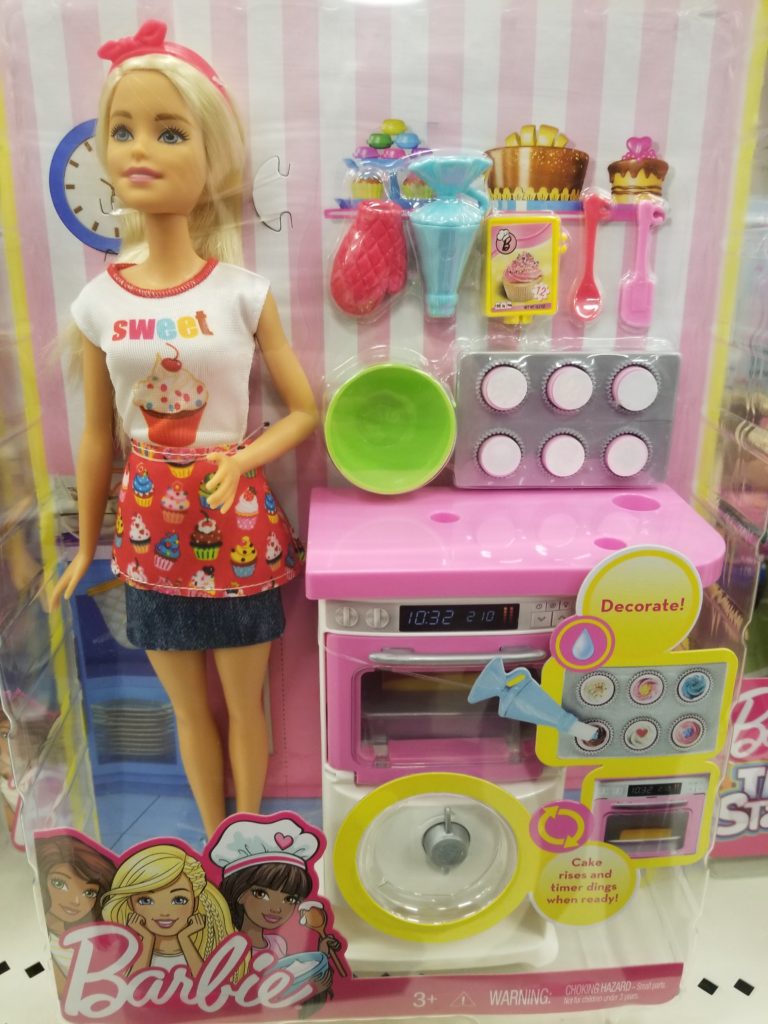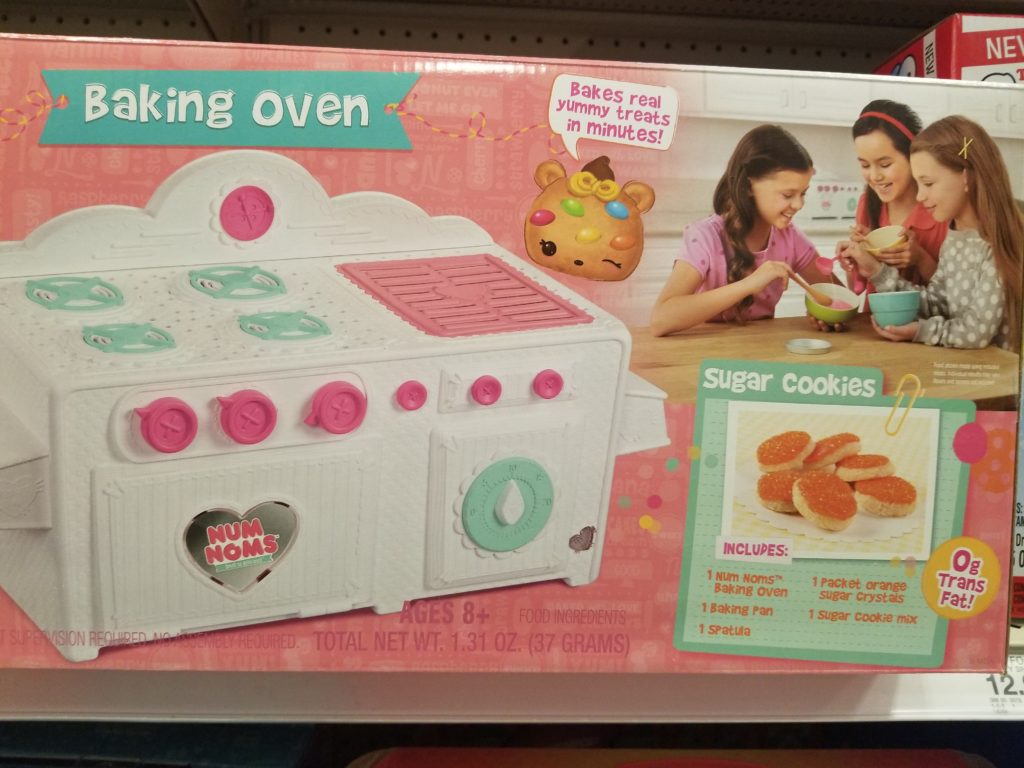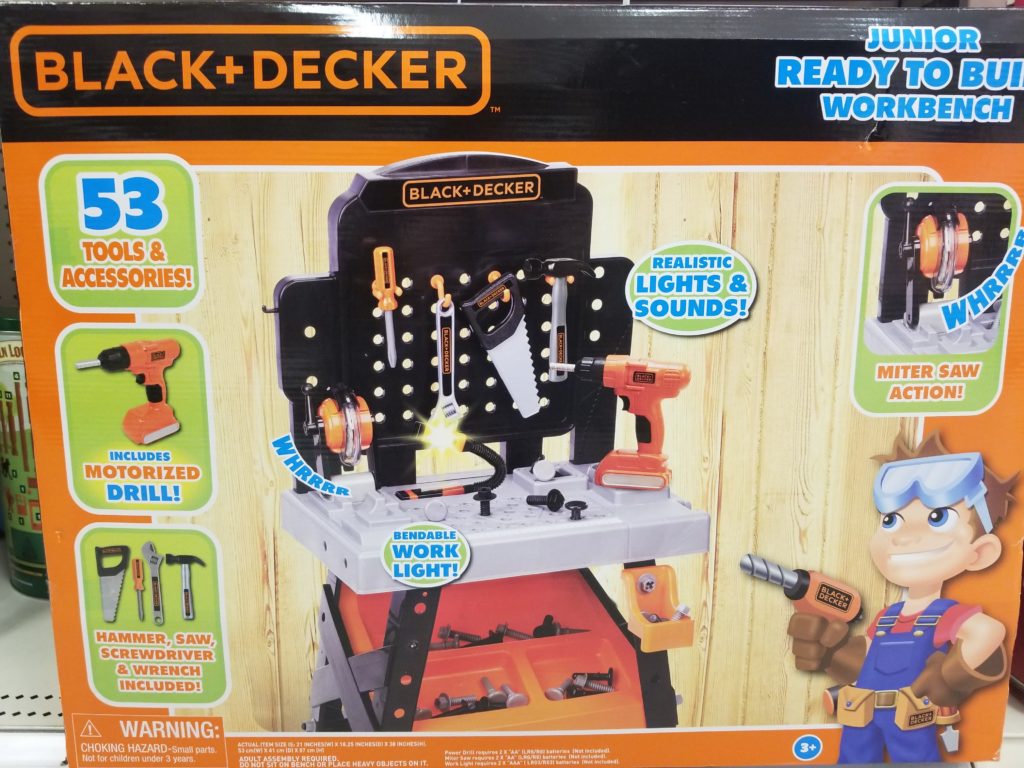Socialization is a lifelong process, but when children are developing socialization is most important. Toys are often used to teach children how to think and what behaviors are appropriate. We use toys as lessons in the gendering process. Clearly, as we walk past a toy section in a store we can notice the gender division of toys based on presentation. The binary limits the types of toys advertised to children based on their gender. Further, toys reinforce the gender binary and gendered roles. Objects doing gender persuade how children do gender. All these photos were taken while I was shopping for gifts for my nieces and nephew. These were just a few of the options I was given.
Barbie as a Babysitter

Barbie has been a toy which has evolved over history. Still, we can see here the stereotypical examples of how this Barbie is doing gender. The occupation itself is one generally associated with women. As a babysitter one must be nurturing, focused on relationships, and attentive; young girls are socialized to focus on these behaviors. The toy’s aesthetic is exemplifying emphasized femininity, from the length of hair to the mini skirt and the structure of the body. Another important note is the color of the box Barbie is inside. Toys are doing gender on the inside as well as on the outside. This color, pink, is one used to tell others the sex of a baby when characteristics are still forming. The box is telling customers who the toy is for without having to say it.
Barbie as a Baker

Ideally, I did not want to use two Barbie toys, but there was an entire aisle dedicated to them. A sea of pink boxes holding mostly women with a few token men; all performing some type of work. I chose this doll because of her shirt. Without much analysis we think it is appropriate being she is a baker. The shirt also is an indicator of how women are to be perceived – “sugar and spice and everything nice.” To me, the shirt says more than her obvious feminine appearance. The mass production of this type of toy is influential in the socialization of children. By filling an entire aisle of dolls stores are telling girls how limited their options are, even if it is just a choice of what to play with.
Action Figures Not Dolls

Not only is this toy doing gender, but it is expressing hyper-masculinity. We see the overly accentuated muscles of the wrestlers and the word “battle” in large lettering clearly at first glance. With more focus we notice the facial hair, closed fists, and privilege of having no shirts on. This toy is used to act out competition, aggression, and violence in a playful way. Often, young boys are socialized to believe to be violent is to be masculine. This is a direct contrast from the Barbie toy which is focused on forming relationships and taking care of others.
Girls Only

The Baking Oven does more than tell customers who the toy is for with the indicating pink color of the box. This box shows which children are playing with it in the top right corner. The oven itself is feminized with pink oven notches. Again, the play in this toy is teaching girls what behavior is traditionally expected of them. This learned behavior directs how girls think of themselves and their capabilities. Further, it impacts the way they do gender themselves.
Boys Only

Again, we have a toy box giving instruction on what type of child would want to play with this work bench. From the colors of the box to the little boy in the bottom corner we are told who to buy this for. Tools and construction have been associated with men about as much as baking and babysitting has been associated with women. For boys, building and working with their hands relates to much of the toys. Learning early how to think logically, systematically, and for themselves. Children are not only socialized from people – the objects around them provide lessons on what is expected behavior. By giving children toys because of their gender we are telling them “this is how boys behave and that is how girls behave.” We are teaching them how different women and men are rather than how similar.
I love how your post shed light on how gender norms are pushed onto children through toys they play with every day. Toys are meant to help children express themselves and use their imaginations but it is so limiting when only girls can be nurses, babysitters, and bakers, while boys are wrestlers or “handy-men”. I am happy you made this post and focused on how the gender binary affects children.
I think this really speaks about gender roles that society continues to push into individuals, that men are only doing the masculine roles such as the wrestler or handyman. While Barbie has to be the babysitter or baker. Why can’t ken be marketed as a baker, pet sitter, or babysitter. Not only does it limit women, but it also limits men thinking they can’t take on feminine roles.
Toys can be over gendered at times not only by a color but with descriptions for example the second picture, the barbie has on a shirt that says sweet. Theses indications of what gender the toys are made for are well identifiable but what message are we sending to our kids, is it a good one.
Toy are gendered. It is ridiculous how easily gender defined these toys are. I work at Walmart, and the toys sections is COMPLETELY gendered through each aisle. Although it makes it easier to find what you are looking for, it gives the perception that if your is a certain sex and age, they must want to play with toys that fit her gender and age.